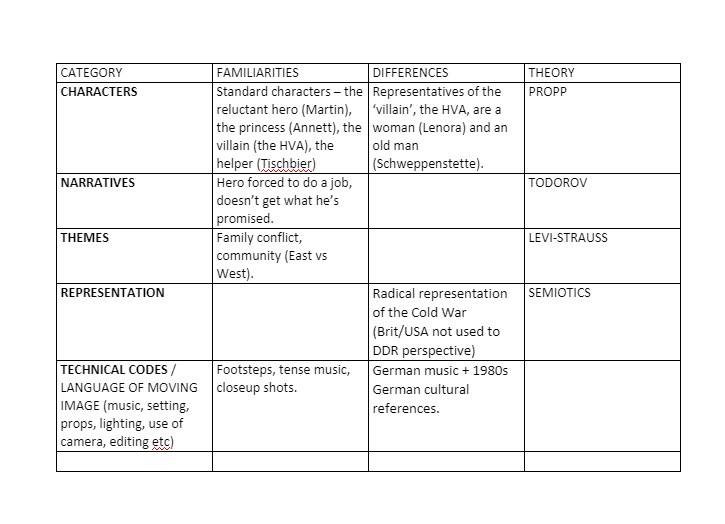Tomb Raider:
Anniversary and Men’s Health magazine, two extremely popular and influential
media products, represent the concept of gender in interesting and contrasting
ways. In this essay, I will explore the representation of gender throughout the
two products, as well as the meaning of the term ‘gender’ itself, and come to a
conclusion as to the radical or reactionary nature of the two texts.
To
understand gender, we must first define it – and that itself is something you
could write a whole essay on. Merriam-Webster defines gender as “the behavioral, cultural, or
psychological traits typically associated with one sex” – i.e., the things
we do, say, wear and think that make us identifiable as a man, woman, or any
other gender role prevalent in a given culture. Both of the texts, trapped as
they are in a cultural framework dominated by liberalism, largely represent
gender according to liberal norms – men and women are commodified, sexualised and
encouraged to see themselves as physically and socially lacking. This trend is dominant
across both CSPs, with few exceptions.
The representation of gender in Men’s Health and Tomb Raider:
Anniversary is different insofar that the two products essentially deal with different
subject matter – Men’s Health obviously deals with males, whereas TR’s female
protagonist leads to a larger focus on the representation of women. Both,
however, are ultimately aimed at men – and this is apparent in the way that Tomb
Raider represents the female form and deals with stereotypes about women. Lara,
Tomb Raider’s main character, is nothing if not a sex symbol – the size of her
breasts has been a cornerstone of the debate about women in video games for over
two decades, and Anniversary doesn’t pull any punches in this regard. Anniversary’s
front cover shows Lara posing side-on, with her large breasts, short shorts and
smug facial expression clearly visible – she holds two pistols, symbolising her
power as an independent heroine. The presentation of Lara as independent and
able to protect herself is easily interpreted as a radical representation, but
this isn’t the right way of looking at it – Lara’s guns, the images on the back
cover of her shooting at dinosaurs and running along walls, the very
representation of Lara as violent and powerful, serves to crown her
sexualisation and further titillate the text’s assumed male audience. In peak
liberal form, Lara’s own power simply serves to further her representation as a
sex object – she’s the hot mercenary lady with giant breasts who kills people
without a second thought, the perfect counterpoint to the sort of sterile basement
nerd who played videogames in 1996, with the obvious implication being that she
is sexually dominant and probably gets a lot of action. This is hardly a radical
representation of the female form – it’s less revolutionary feminism and more
reactionary liberalism, bound up in the same philosophy of ‘empowerment’ that
sees supposed radicals defending institutions like prostitution; and it’s just
as vile and embarrassing.
Men’s Health chooses to deal with gender in a slightly more nuanced way,
though it isn’t really any better. Page 101’s discussion of an older man’s
struggle against his own degenerate lifestyle is actually rather inspiring – it’s
a thoroughly interesting representation that deals with ageing in an extremely
mature way, and serves to demonstrate that old age is not an excuse when it
comes to keeping fit. The representation of Philip Howells, a not-particularly-attractive
69-year-old man, as a kind of fitness hero is really rather radical in its
orientation towards the old. The magazine’s front cover is decidedly less
impressive, plastered as it is with slogans such as “BLAST BODY FAT!” and “DOUBLE
YOUR METABOLISM!”, as well as a rather large image of a muscled Vin Diesel showing
off his gains for all to see. Liberalism’s sexualisation of everyone and
everything strikes again – Diesel’s large arms, his big muscles, his aggressive
straight-on pose and his no-nonsense facial expression are a clear
demonstration of the fact that he is being represented as an idealised ‘sexy
man’ for you to emulate. The aforementioned slogans capitalise on your own
sense of inadequacy, your own feeling of lacking manhood, and present you with
quick fixes that will supposedly help you achieve the ‘sexy man’ body – this is
obviously not achievable for any normal person, and that very fact is what
keeps you feeling inadequate, keeps you buying copies of Men’s Health, and,
ultimately, keeps paying for William Randolph Hearst III’s ever-expanding collection
of atrocious ties (which is, of course, what this is actually about). This is,
somehow, an even less thoughtful representation of ideas around gender than in
Tomb Raider.
Neither of these texts could be described as radical in any meaningful
way, save for a small section of Men’s Health magazine. The producers of both
products are seemingly all in thrall to liberalism’s degenerate cult of sex
worship, and are thoroughly reactionary in their political and cultural
orientation.


